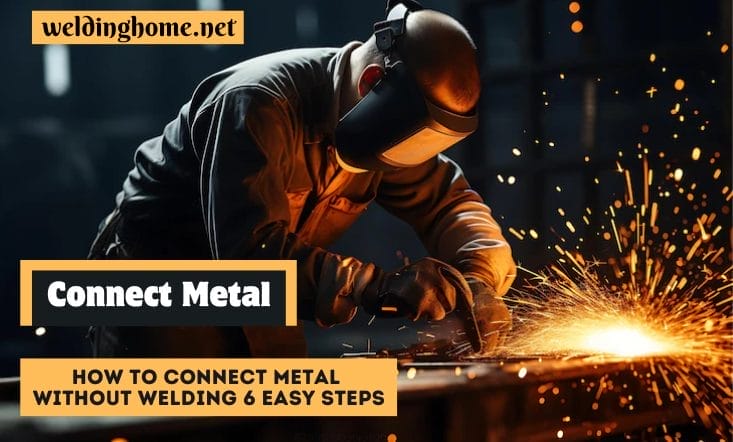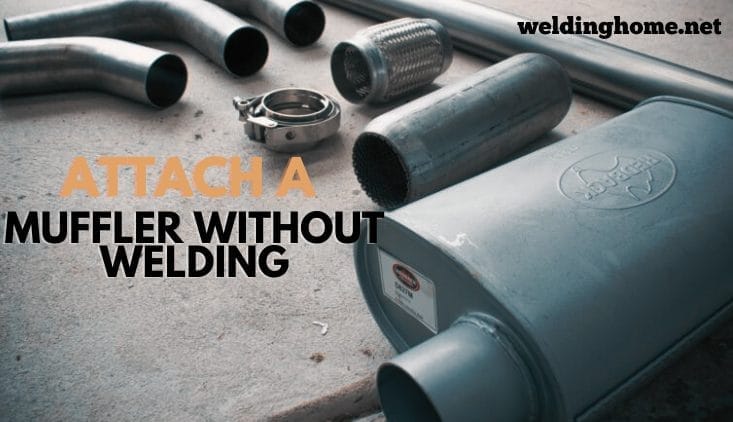How to Connect Metal without Welding 6 Easy Steps

For people working with metal, welding is a well-known and familiar way to join metal pieces. On the other hand, welding needs special tools and knowledge that many DIYers and artists don’t have. Luckily, there are other ways to join metal pieces together besides welding. This piece will talk about How to Connect Metal without Welding 6 Easy Steps to make lasting metal bonds.
6 different Steps to Connect Metal without Welding
Explore various techniques for metal joining that don’t involve traditional welding:
various Procedures for Joining Metal Without Welding:
Although welding is a popular technique for Connect Metal without Welding, other options exist. Depending on your needs and the materials you’re using, you can link metal without welding using these six distinct steps:
1. Bazing
- Like soldering, except with flux to encourage adhesion and filler metal with a higher melting point (brazing rod).
- It is ideal for connecting thin metal sheets and different metals.
- Heating the metals and filler metal with a brazing torch or furnace is required.
- Procedure: Wash and prepare the surfaces that will be connected.
Give the surfaces a flux application.
- Heat the metal using a furnace or torch until it reaches the brazing temperature.
- Let the brazing rod pass through the opening after applying the brazing rod to the joint.
- To prevent cracking, progressively cool the joint Connect Metal without Welding.
2. Soldering:
Soldering uses a filler metal with a lower melting point than brazing.
- Perfect for assembling thin metal sheets and tiny electrical components.
- Requires heating the metals and solder with a soldering iron or torch.
- Procedure: Wash and prepare the surfaces that will be connected.
- Give the surfaces a flux application.
- Heat the metal using a soldering iron or flame until it reaches soldering temperature.
- The solder should be applied to the joint and allowed to run into the space.
- To prevent cracking, progressively cool the joint.
3. Pulling rivets:
- Mechanically joins two or more pieces of metal using metal rivets.
- Easy and quick method with little equipment needed.
- It is ideal for uses where reliable connections are not required.
Actions:
- For the metal parts that need to be linked, mark and drill holes.
- Using a rivet gun or hammer, insert the rivet through the holes and fasten it.
4. Bolting
- It makes a solid and safe connection by using nuts and bolts.
- Requires the metal parts to have holes predrilled in them.
- Ideal for uses that need to be disassembled or adjusted.
Actions:
- For the metal parts that need to be linked, mark and drill holes.
- Bolts should be inserted through the holes and fastened with nuts.
5. Snapping
- It uses a crimping tool to bend metal connections or sleeves around wires or cables.
- Establishes a safe electrical link.
- Needs the proper connections and a crimping tool.
Actions:
Cut off the wires or cables’ ends.
- Put the wires into the connection that has been crimped.
- Utilizing a crimping tool, crimp the connection.
6. Attachment Adhesion:
- Uses powerful adhesives to join metal surfaces.
- Ideal for non-load bearing applications or attaching thin sheets.
- Requires careful adhesive selection based on application and material.
Actions:
- Assemble and clean the surfaces that will be linked.
- On one surface, apply a thin coating of glue.
- Apply pressure and push the surfaces together until the glue solidifies.
Extra Things to Think About:
- The ideal technique for joining metal without welding relies on several variables, such as:
- The metal’s kind and thickness
- The connection’s strength and load-bearing specifications
- The ideal degree of permanency
- The resources and instruments at hand
- Selecting a method that fits your unique requirements and available resources is critical.
- The manufacturer’s directions should always be followed when using tools or materials.
Sticky Solutions
Adhesives are one of the easiest ways to Connect Metal without Welding parts together. Different kinds of glue are made to stick metal surfaces together. Epoxy, cyanoacrylate, and polyurethane are some of these materials. They’re helpful in many ways, like being simple to use and not requiring pricey tools. But you should think about the type of glue you need for your project and how much weight it needs to hold. Not all adhesives are the same in terms of power.
Fasteners made of metal
Another safe way to join to metal pieces together without welding is with mechanical connections. In this group are bolts, nuts, and screws. These screws can be used for many different things because they are flexible and come in different sizes and materials. When picking the right bolt, make sure it fits the width of the metal and the weight that it needs to hold.
Riveting
Riveting is a method that involves using rivets to create a secure connection between metal parts. The process includes drilling holes in the metal pieces and inserting a rivet, which is then deformed to hold the parts together. Riveting is particularly useful for projects where welding is not feasible, such as Connect Metal without Welding aluminum or thin metal sheets. It’s a durable and vibration-resistant method.
Holding on
The cold-forming process of clinching makes a mechanical link between metals. Two metal sheets are pressed together under a lot of pressure, making them Connect Metal without Welding. In the aircraft and car businesses, this method is used a lot. It lets you link things without using glue or heat, and the bond is clean and strong.
Using screws and bolts
Bolting and fitting are simple ways to join metal pieces together. Bolting is a way to connect two metal parts by using bolts and nuts. Screwing, on the other hand, does the same thing but with screws. Even though these methods might not make the link as strong as welding, they can be used in situations where a reasonable amount of strength is enough.
Magnets and Methods
Magnetic methods are becoming more popular in many fields. With the help of strong magnets, you can Connect Metal without Welding temporarily or permanently. This method works great when you need to take something apart or rearrange it. It is easy to use magnetic links, and they don’t hurt metal surfaces.
Conclusion
It is possible to join metal pieces together without welding, and this is useful in many situations. You can choose from a wide range of choices, such as adhesives, mechanical fasteners, welding, clinching, bolting, electric methods, and magnetic ones. The important thing is to pick the method that meets the needs of your project in terms of how strong, long-lasting, and easy to put together it is.
Get creative and try these different ways to Connect Metal without Welding—you’ll be amazed at how many options you have for your projects.
FAQs
Is there a way to make a strong seam without welding?
In fact, there are a number of ways to make strong links without welding, such as using adhesives and mechanical fixings.
What is the best way to Connect Metal without Welding?
Riveting and clinching are great ways to Connect Metal without Welding because they make a strong link that lasts.
Can I take apart parts that are linked using magnets?
Yes, magnetic ways make it easy to take metal parts apart and put them back together again.
Are these methods good for both professional and do-it-yourself projects?
Yes, these methods are flexible enough to be used by both professionals and people who want to do their own work.
Do I need any special tools to use these?
Some ways may need specific tools, but most of them can be done with simple tools that are easy to find in most workshops.



